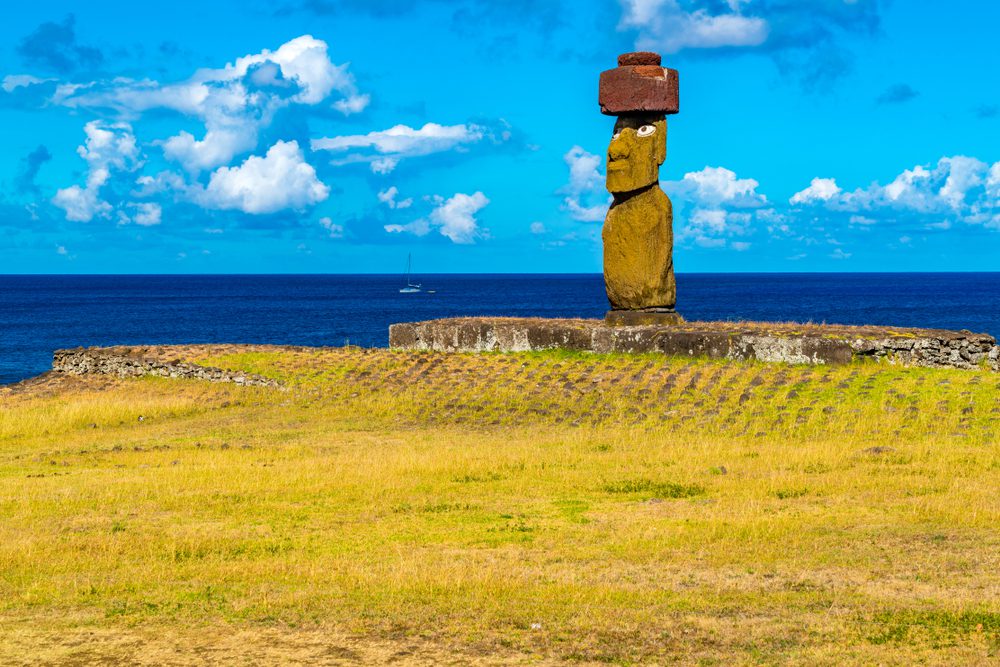A select few of Easter Island’s giant heads have an especially strange choice of headwear. Just a handful of these famous volcanic rock statues have a red “hat” placed on top of their head. Not only are these hats made out of a red stone from a quarry on the other side of the island, but they also appear to have been added after the statues were erected.
So, how and why did these 13-ton “pukao” hats get up there on top of a 4-meter (13-foot) statue? Archaeologists think they have cracked the case.
The island of Rapa Nui was first inhabited in the 13th century by Polynesian seafarers. Within decades of landing there, they spent the next two centuries forging these giant sculptures known as moai out of volcanic tuff, a type of rock made from volcanic ash ejected during an eruption. Experts still argue about it, but it’s now generally accepted that these monoliths were moved from the quarry with a rocking motion, kind of like how you would move a refrigerator except using ropes. This quarry, however, is over 12 kilometers (7.5 miles) away from the red scoria quarry where the pukao hats were forged.
In 2018, archaeologists argued that the hats were placed on the statues after they were erected, most likely after being rolled in raw form from the quarry to the statues and then carved on site. They discovered that uncarved red scoria stone can be found en route to the statues from the quarries.
Some of the pukao hats weighed as much as 13 tons, no mean feat getting one on top of a 4-meter-tall statue. Image credit: takepicsforfun/Shutterstock.com
Ramps must have then been used to get the 12-tonne hats up to head level. However, photogrammetry and high-tech 3D imaging highlighted indentations on the base of the hats, strongly suggesting they could not have simply been pushed up the ramp on their base, otherwise the soft-stone grooves would be rubbed off.
Instead, the researchers argued the pukao were rolled up large ramps to the top of a standing statue using a parbuckling technique, a tried-and-tested method of shifting heavy loads that employs the help of ropes looped under the object. Thanks to rotational leverage, this allows you to hoist heavy objects up ramps with relative ease. The researchers worked out that this whole process would require fewer than 15 hard workers.
“Lots of people have come up with ideas, but we are the first to come up with an idea that uses archaeological evidence,” lead author Sean W Hixon explained at the time.
Why they went to all this effort, though, remains unclear. Most researchers understandably believe the hats were used to distinguish between statues or signify the power of a particular statue. One thing’s more certain: placing the hats was no small task, so they must have held some truly deep significance.
An earlier version of this article was published in 2018.
Source Link: Why Do Some Easter Island Moai Have Red Hats On?
